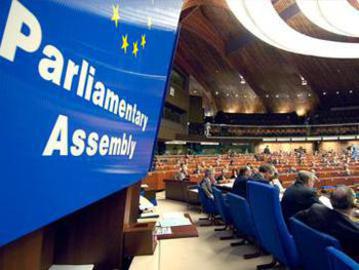Azerbaijan urges inspection of Nakhchivan’s blockade, Sarsang humanitarian catastrophe

By Sara Rajabova
A member of the Azerbaijani delegation to PACE highlighted the blockade of Nakhchivan and the humanitarian catastrophe of the Sarsang reservoir at a meeting of the PACE Monitoring Committee.
In the meeting held in Malta on February 27-28, Elkhan Suleymanov also talked about the economic, environmental, and biological consequences of the crisis.
Suleymanov said the Autonomous Republic of Nakhchivan, which is an Azerbaijani exclave situated on the border of Iran with 410,000 Azerbaijani inhabitants, has been blocked by Armenia since almost 25 years ago.
He said Nakhchivan's population, whose rights were violated, are subject to great torture, and the economic and social situation in the region still remains complicated.
"After occupying 20 percent of other Azeri territories illegally, Armenia is threatening to annex this Azerbaijani territory. Given these continuous threats towards Nakhchivan and its citizens, one can easily understand that daily life in such a menaced enclave is intertwined with high pressure," Suleymanov said.
Interestingly, Nakhchivan's blockade was never the subject of any hearings, discussions, or adopted documents in any international organizations, including PACE, for 25 years, he added.
"If the Council of Europe wants to accelerate the development of democracy, it should state its final word in order to end this occupation first," Suleymanov said.
The working group, established for evaluating the material and cultural losses inflicted by the military operations of the Armenian armed forces, has started the process of estimating the damage inflicted on the Nakhchivan Autonomous Republic by Armenia.
Suleymanov also spoke of the humanitarian catastrophe of the Sarsang reservoir, saying that Sarsang reservoir is situated 726 meters above sea level (with a 125-meter-high dam and the capacity of 560 million cubic meters), and was built on the Tartar River in 1976.
"The reservoir has been under Armenia's occupation since 1992, and is in an emergency situation due to the lack of maintenance for over 20 years. It poses a serious danger for the lives of 400,000 people of 7 Azerbaijani provinces, and has economic, environmental, and biological consequences in the region. The population of the region is faced with a serious humanitarian catastrophe," Suleymanov said.
He called on the international community to eliminate this humanitarian catastrophe, underlining that today in addition to about one million refugees forcefully displaced from the occupied Azerbaijani territories, 410,000 people of Nakhchivan, and 450,000 people who are faced with the danger of the Sarsang humanitarian catastrophe, have become victims of occupation and blockade.
Suleymanov also said the Council of Europe should not turn a blind eye to the occupation, and should make definite decisions regarding the blockade of Azerbaijani territories.
A number of European MPs supported the issues raised by Suleymanov at the meeting.
After his speech, the Monitoring Committee decided that co-rapporteurs of the two countries - Azerbaijan and Armenia - should study Nakhchivan's blockade and the humanitarian situation of the Sarsang reservoir, and include these issues in their reports.
Stefan Schennach, Chairman of the Monitoring Committee, stressed the importance of holding hearings on Nakhchivan's blockade in the Council of Europe.
The Presidential Committee of the PACE earlier approved a draft resolution on the Sarsang water reservoir.
Suleymanov said the draft resolution was signed at his initiative on June 25 by 45 PACE parliamentarians from 18 countries.
As a result of the Armenian occupation following a brutal war in the early 1990s, seven regions of Azerbaijan can no longer use water from the reservoir which is currently in an emergency situation, because it has not been maintained due to the occupation.
Engineers and hydrologists have predicted that if the dam breaks down, it will flood more than 30 villages. The risk of a disaster resulting from an accident is currently very high and the lives of 400,000 Azerbaijani citizens who live in the six regions downstream are in immediate danger.
Azerbaijan and Armenia have been locked in conflict for over two decades. Armenia occupied over 20 percent of Azerbaijan's internationally recognized territory, including Nagorno-Karabakh and seven adjacent regions, after laying territorial claims against its South Caucasus neighbor that sparked a lengthy war in the early 1990s. The UN Security Council has adopted four resolutions on Armenian withdrawal, but they have not been enforced to date.
Here we are to serve you with news right now. It does not cost much, but worth your attention.
Choose to support open, independent, quality journalism and subscribe on a monthly basis.
By subscribing to our online newspaper, you can have full digital access to all news, analysis, and much more.
You can also follow AzerNEWS on Twitter @AzerNewsAz or Facebook @AzerNewsNewspaper
Thank you!
